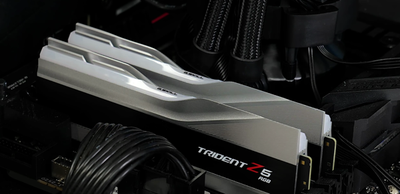
My thoughts on the G.SKILL Trident Z5 RGB DDR5 64GB 5600MT/s CL36 (2024)
My thoughts on the G.SKILL Trident Z5 RGB DDR5 64GB: overclocking, compatibility, design, and user experience.
Introduction
I recently purchased and installed 64GB of G.SKILL Trident Z5 RGB DDR5 RAM for my gaming setup. Over the past few weeks I have thoroughly tested this RAM in various scenarios (including some overclocking) - below is my experience with it.
Some photos (click to enlarge)
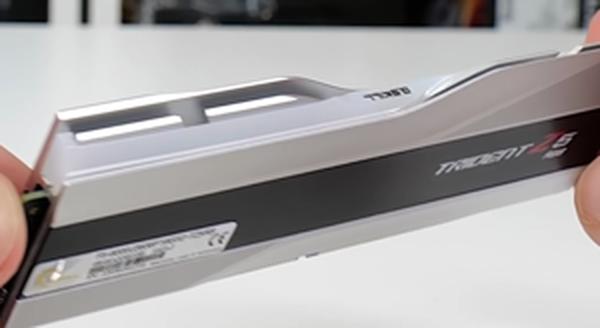
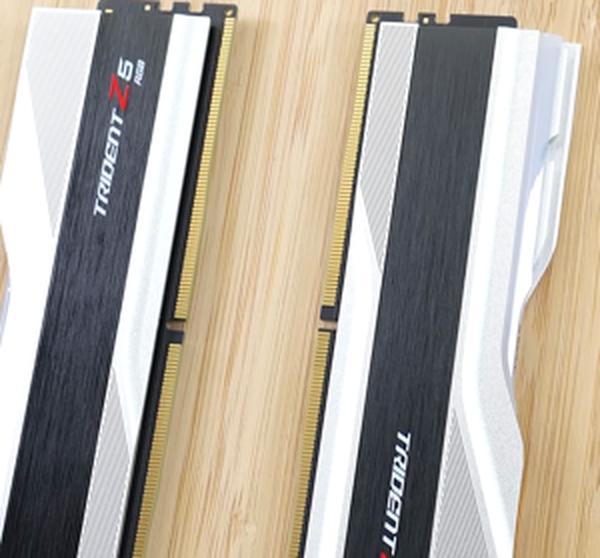
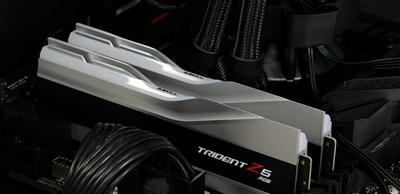

Specs of the G SKILL Trident Z5 RGB 64GB DDR5
- Release Year
- Brand
- Compatible Devices
- Computer Memory Size
- Memory Speed
- Ram Memory Technology
Prices
Understanding XMP Overclocking
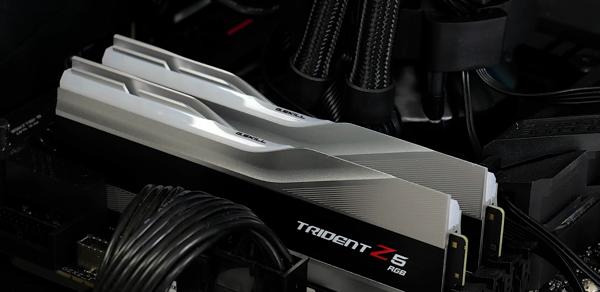
Understanding XMP (eXtreme Memory Profile) overclocking requires diving into the nitty-gritty of how RAM operates within the ecosystem of a high-performance computer. Here's a list of key points to consider when working with RAM like the G.SKILL Trident Z5 RGB DDR5:
XMP Profiles: These are predefined and tested overclocking configurations that can be enabled in the BIOS to push memory speeds beyond standard specifications.
Hardware Compatibility: Not all motherboards and CPUs support all XMP profiles. It's crucial to check the motherboard's QVL (Qualified Vendors List) to ensure compatibility.
Stability Versus Performance: Achieving higher memory speeds can lead to instability if the hardware isn't up to par. Sometimes a trade-off between stability and performance is necessary.
BIOS Updates: These can significantly affect overclocking potential and stability. Always make sure your BIOS is up to date.
It’s essential to understand that XMP is essentially an automated overclocking tool that adjusts several parameters to boost memory speed without the need for manual tweaking. Personally, I've used the Trident Z5 RGB series, and enabling XMP was a breeze through the motherboard's BIOS, instantly improving my system's performance. However, it's not always a plug-and-play situation.
For instance, when trying to reach advertised XMP speeds, compatibility with the motherboard and CPU is critical. Initially, even a minor memory overclock would make my system act up. But as I kept the BIOS updated, the same memory achieved 5200 CL-38 speeds, highlighting the importance of a compatible and capable setup.
I'm aware of several users who've had issues reaching the max overclock speeds. Often, this is not a reflection of the memory itself but rather a lack of understanding of XMP compatibility. Bad reviews condemning G.SKILL for the inability to run at advertised XMP speeds might often be misplaced frustration due to this misunderstanding.
The performance gains with XMP can be significant, especially for tasks that benefit from fast memory access. Though, for some, the difference might be negligible compared to the stability of standard speeds. Remember, the value of overclocking varies depending on individual use cases.
In the world of RGB memory, Trident Z5 stands out. Integrating with my motherboard was seamless, and the customization options for the RGB lighting were more than adequate, though I found G.SKILL's software lacking and opted for the motherboard's own software instead.
Conversely, it's important to note that not all experiences with XMP overclocking are created equal - some users report stability issues, while others find that their system cannot handle the XMP speeds due to various hardware limitations or incompatibilities.
In sum, while the Trident Z5 RGB series offers excellent potential for overclocking, it's incumbent upon us as users to understand that achieving peak performance with XMP profiles isn't guaranteed out of the box—it's a symphony of compatible hardware, patience with system tuning, and sometimes accepting that less can be more.
Memory Compatibility and Performance

When I first got my hands on the G.SKILL Trident Z5 RGB DDR5 RAM, I had high hopes for a seamless integration with my high-performance setup. My rig, powered by an Intel 13th Gen CPU, had all the makings of a powerhouse, and with a top-tier motherboard to boot, I was ready to push the limits. Here's what stood out to me as I evaluated the memory's compatibility and performance:
- Compatibility Is Key: Before investing in high-speed RAM, I made it a point to check the motherboard's Qualified Vendor List (QVL). I can’t emphasize enough how crucial this is – it's the difference between a system that sings and one that won't even boot.
- XMP Profiles: A breeze to enable through the BIOS, and necessary to hit those peak speeds advertised by G.SKILL. However, I learned that it's not just a 'set it and forget it' scenario; system stability is at the mercy of your hardware's synergy.
- System Stability: I initially struggled with instability at higher overclocked speeds. With patience and BIOS updates, I found a sweet spot at DDR5-5200 CL-38, showing that sometimes you need to take a step back to maintain a stable and reliable system. 4. Quantity vs. Speed: I opted for a hefty 128GB total capacity, sacrificing a tad on speed for the sheer volume of RAM. My workflow is heavy, and having more RAM for virtual machines, editing, and large datasets took precedence.
- Aesthetics: The RGB can't go unmentioned – it's a stunning addition to any build. Customizability is simple, and when it's harmonized with the rest of my setup, it creates a cohesive and personalized look.
Sure, there are some drawbacks – the G.SKILL RGB software isn't everyone's cup of tea, and some users report coil whine under heavy loads. And yes, the price tag is on the steeper side, especially for DDR5. But for raw performance and the ability to fine-tune to your system’s capabilities, it's a solid choice.
One piece of advice to fellow enthusiasts: don’t rush to blame G.SKILL if you can’t hit those advertised XMP speeds. There are so many factors at play, from the motherboard’s memory controller to BIOS maturity. A little research and patience can go a long way in ensuring you get the most out of your RAM kit.
In terms of sheer performance, the Trident Z5 has met my expectations. It's not just about flashy lights or big numbers; it's about finding the right balance for your specific needs, and in my case, it's been a rewarding experience. If you're considering a similar upgrade, weigh your performance needs against your system's capabilities – and if it all lines up, the Trident Z5 could well be the powerhouse you need.
Design and Aesthetics Review

In my quest to spruce up my gaming rig, the G.SKILL Trident Z5 RGB DDR5 RAM caught my eye not just for its technical prowess but for its physical appeal as well. Its striking design speaks volumes about its target market - those looking for a blend of performance and style.
Here's a quick rundown of the aesthetics:
Sleek Aluminum Heatspreader: The aluminum design not only gives a premium feel but also helps dissipate heat effectively.
RGB Light Bar: The customizable light bar is a huge plus for those who love personalizing their setup.
Color Choices: With options like black brushed-aluminum or a metallic silver body, it’s versatile enough to match most build themes.
The first thing that stands out with the Trident Z5 series is the streamlined look. The combination of a metallic strip (comes in silver, black, or white) and the translucent RGB lighting bar makes for a visual treat. Sure, performance is my top priority but who doesn't appreciate hardware that also looks good?
The customizable RGB lighting is a neat feature. Through G.SKILL lighting control software or compatible motherboard software, it's easy to sync the Trident Z5's lighting with the rest of my setup. I personally use the Asus suite for a seamless effect, steering clear of the G.SKILL software based on mixed reviews concerning its user-friendliness.
Now, while aesthetics are important, there are some drawbacks to consider. For starters, high-quality design features like these could add to the cost; DDR5 by itself is already more expensive than previous generations. Furthermore, some might find the RGB lighting unnecessary, especially if they have a closed case or simply prefer a more minimalist setup.
There have been instances I’ve heard of where the RGB lights didn't sync perfectly out of the box, requiring additional tweaking in the software, which is something to keep in mind. And while not overtly negative, the sleek design becomes more of a subtle touch if you're not routinely showing off your build.
Still, if aesthetics are key to your build, G.SKILL’s Trident Z5 RGB DDR5 manages to strike an alluring balance between form and function. The iconic RGB strips truly highlight the sophisticated architecture of the stick itself, amplifying the overall gaming experience through a harmonious integration of color and light. Overall, for gamers and enthusiasts who value aesthetics as much as performance, the Trident Z5 series is a testament to how far RAM designs have come and how they contribute to the visual identity of a gaming PC.
Real-World Usage Experience

Having run G.SKILL Trident Z5 RGB DDR5 RAM in my latest build, I've experienced firsthand the advantages and the hurdles of using this high-end memory. With 128 GB spread across dual 64GB kits, the sheer volume of RAM at my disposal is nothing short of impressive. Here's a rundown of my real-world usage experience, highlighting what works well and the caveats you might encounter:
Pros:
Vast memory capacity for multitasking and demanding applications.
Aesthetically pleasing with customizable RGB lighting.
The potential for high-speed performance with XMP profiles.
Cons:
Compatibility and stability depend heavily on other hardware.
XMP overclocking can be a hit or miss based on the motherboard's limitations.
Price point might be steep for the average user.
Now, let's sift through the details. My MSI Z690 Edge WiFi motherboard, paired with a 13th-Gen i7, integrates seamlessly with this G.SKILL RAM. The XMP profiles offer overclocked speeds, but that's with the caveat that your motherboard's memory controller needs to play nice with these profiles. It's essential to consult the motherboard's QVL (Qualified Vendors Lists) to avoid compatibility headaches. I learned this the hard way, with early attempts at overclocking leading to stability issues. However, post-BIOS updates have allowed me to run the memory at a stable 5200 CL-38, showcasing the importance of keeping your system up-to-date.
On the aesthetics side, the RGB lighting is a hit—easy to customize and sync with other components. But let's not sugarcoat it—G.SKILL's own software is lackluster, and I recommend using third-party tools for lighting control.
The elephant in the room is the price. DDR5 is currently an investment, and it's worth weighing the performance benefits against your actual needs. While the bling factor of RGB is appealing, it doesn't directly correlate to a performance boost, so you might want to consider non-RGB alternatives if budgets are tight.
In summary, Trident Z5 RGB DDR5 RAM is a powerhouse that can elevate your high-performance builds to new heights, with looks to kill. However, it demands careful pairing with compatible hardware and may not forgive casual oversights. It's a premium component with a matching price tag, and its full potential is only realized under the right conditions. But once everything aligns, it's smooth computing ahead—a testament to G.SKILL's commitment to pushing the boundaries of memory technology.
Comments (0)
Share